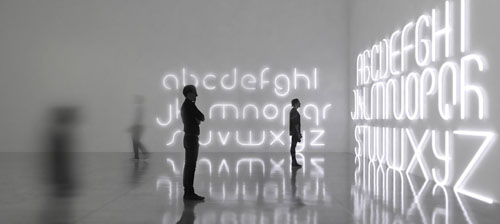Fashion’s affairs with typefaces have been many – from the Didone styles of Vogue to the sans serifs favored by Chanel, Commes des Garçons and Fendi. But Cooper Black doesn’t have the sleek lines or sophistication you might expect from a sartorial squeeze.
So where did this font surface from? And why has mainstream fashion gone so mad for it?
Paul McNeil, a typographic designer at MuirMcNeil and a senior lecturer in typography at the London College of Communication, thinks it has an “unexpected affability and liveliness … due partly to its bulbous serifs, its large, lower-case letters and its tiny, gleaming white counter forms.”
It could well be its brand of familiar charm that is helping it win fashion’s favor now. It is all about retro nostalgia – it just says ‘1970s’ the minute you look at it.
It was created by Chicago-based typographer, illustrator and commercial artist Oswald “Oz” Cooper in 1922. It quickly became ubiquitous in advertising. It's foundry declared it to be the “world’s bestselling typeface in 1927”. It was marketed by the foundry’s sales manager Richard N McArthur as “the selling type supreme … it made big advertisements out of little ones”. But in the 60s, its gregarious characters fell slightly out of favor with the ad world.
Nevertheless, it has become visual shorthand for the late 60s and early 70s because it was in that era that it was brought out of adland and into the popular culture mainstream on a wave of west coast harmonies, appearing on the cover of the Beach Boys’ Pet Sounds in 1966 before going on to be the typeface of choice on the Doors’ LA Woman in 1971 and David Bowie’s Ziggy Stardust in 1972. It was the typeface of The Garfield Show and M*A*S*H.
It was also in this era that it kicked off another meaningful relationship: with hip-hop. Breakdancing crews used iron-on transfers of the letters on their T-shirts and it later appeared on albums and merchandise. More recently, in nods to the earlier DIY days of hip-hop, it has been used by Odd Future, on Tyler the Creator solo albums and Frank Ocean’s Channel Orange.
In a way, it was never out of fashion – it is something of an American street-culture classic. So when mainstream fashion chooses to adorn T-shirts with Cooper Black, it is subliminally referencing all these things – hip-hop, the 70s, sitcoms and now, Louis CK.
It is all of these cultural anchors that lead to another tenet of its popularity. With a sense of authenticity Cooper Black has a cheery gaucheness that makes it look untutored and uncontrived.





























